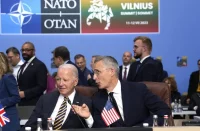Whether part of a preplanned strategy or not, large-scale migration flows often destabilize the destination country, and India and Myanmar are bracing for the geopolitical consequences of the Bangladeshis within their borders acquiring a firmer sense of identity separateness from their hosts.
Ivy League researcher Kelly M. Greenhill’s revolutionary concept about “Weapons of Mass Migration” claims that immigration processes can be abused as a Machiavellian ploy to influence state actors, whether the source country, transit ones, or the destination state, and none of this necessarily has to occur with all parties’ complicity or even knowledge. In most of the cases that she studied in her research, Greenhill noted that the migrants themselves usually have no idea that they’re being used as pawns in a larger power game, and it’s from this perspective that one should approach the issue of Bangladeshi migrants in India and Myanmar.
Background Briefing
To start off, the issue is incredibly complicated, as many arguments have been made about the indigenousness of the Bangladeshis in these two countries, with the most common simplified version being that they’ve had a presence in Northeastern India and Myanmar’s Rakhine State even before the arrival of the British. Of note, the UK obtained these regions as a result of the 1826 Treaty of Yandabo that ended the First Anglo-Burmese War, and it was from this point onwards that the Myanmarese (and especially the Buddhist Bamar ethno-majority and their Buddhist Arakan minority in Rakhine State) say that the British-assisted influx of Muslim Bangladeshis occurred. As for Northeastern India, the millions of Bangladeshis that live in this already restive region arrived during and after the 1971 war.
For the purpose of clarification, ethnic Bengalis in the Indian state of West Bengal are not referred to as Bangladeshis in this analysis, as they had been living in their home region for generations and did not migrate there from the territory of modern-day Bangladesh, and are therefore considered as a separately classified demographic in the context of this piece.
Moving along, the topic of Bangladeshis (or suspected/alleged Bangladeshis, as is the case of the Rohingya) in India and Myanmar has become increasingly politicized and even violent. The Rohingya Crisis is the most well-known indication of that, though what comparatively fewer people are aware of is that something much larger is on the verge of happening in Northeastern India as well. The government of Assam has vowed to “detect-delete-deport” upwards of 20 million Bangladeshis suspected of illegally living in the region, and given New Delhi’s unsupportive attitude towards the infinitely much smaller 40,000 Rohingya in the country, it’s doubtful that the Hindutva supremacist national authorities will do anything to stand in their way.
Irredentist Precedents
If anything, they’ll probably facilitate this process on national security grounds, as there’s been considerable fear in the region that these “Weapons of Mass Migration” are irreversibly changing local demographics. Again, it must be emphasized that this isn’t a condemnation of every Bangladeshi living in Northeastern India, nor any oblique hint that they’re “complicit in a conspiracy” to Islamize the region in the run-up to “justifying” irredentist claims by Dhaka, but just that this is nevertheless the geopolitical consequence regardless of intentions and could be manipulated in this direction, ergo the relevance of Greenhill’s “Weapons of Mass Migration” concept. Such suspicions aren’t without precedent either, as the earlier cases of the Albanians, Kurds, and possibly in the future, even the Mexicans, demonstrate.
About the Albanians, they migrated en mass to the Serbian Autonomous Province of Kosovo and Metohija and were actually assisted by Tito’s communist government in this regard. Afterwards, they eventually agitated for “independence” and initiated a terrorist campaign to this end, one which saw the direct intervention of NATO’s conventional forces in their support. Concerning the Kurds, they’re scheming for their own state and are on the verge of declaring a “second geopolitical ‘Israel’” in Northern Iraq following their separatist referendum. As for the Mexicans, irredentist ultra-nationalists believe that they should instrumentalize their tens of millions of diaspora compatriots in the US in order to “reconquer” the chunk of the modern-day Western USA that they lost to Washington after the 1848 Mexican-American War.

Trouble Brewing
In all three aforementioned examples, major conflicts have already erupted (Albanians) or are latently developing (Kurds, and to a lesser extent, Mexicans), proving that the instance of contiguous cross-border diasporas could serve as a trigger for regional destabilization if not properly handled by all sides. The Bangladeshi diaspora in South Asia is a case in point, as it’s already contributed to violence in Myanmar and holds the very real potential to do so in Northeastern India if New Delhi tries to expel the roughly 20 million Bangladeshis that are living there. As can be observed from the Rohingya case in Rakhine State, international media is very sympathetic to the plight of expelled Muslim Bangladeshis (or those presumed to be closely related to them like the Rohingyas), so it’s likely that they’ll hold the same stance regarding India’ proposed deportation of their compatriots in the Northeast too.
Just like with the Rohingya, however, there’s a chance that some of the Bangladeshi cross-border diaspora might resort to militancy in advancing their cause, which is especially concerning when it comes to Northeastern India because of the much larger border that the country shares with what is increasingly turning into Bangla-Daesh. An analogous counterpart to the so-called “Arakan Rohingya Salvation Army” (ARSA, which is classified as a terrorist organization by Myanmar) could realistically sprout up in Northeastern India, too, though the sheer difference in population sizes and scale could lead to much more devastating humanitarian consequences than in Rakhine State. Accordingly, it can be expected that the global Muslim community (Ummah) would support the cause of the Indian-based Muslim Bangladeshis just as they do the Myanmarese-based ones, therefore spiking the risk that the conflict could quickly become internationalized through the participation of non-state actors (“volunteers”).
Prospective Options
The problem is that there is no “simple” way to deal with this ever-likely scenario, as India has its own subjectively defined national-social security interests which contradict the humanitarian ones of the Bangladeshi migrants in its Northeastern region. New Delhi can’t realistically expel approximately 20 million people without experiencing major soft power blowback and potentially engendering a militant resistance campaign, one which could predictably be hijacked by terrorist groups. On the other hand, passively allowing the present migration and migrant birthrate trends to continue will inevitably result in changing the demographics of the frontier states, thereby inadvertently contributing to more Hobbesian conflict in the already restive Northeast. It could also drive future irredentist claims by ultra-radical Bangladeshi nationalists inspired by the “Kosovo precedent”. Taking all of this into account, a few suggestions can be offered for how all sides should navigate the coming imbroglio.
The first thing is that India will probably not succeed in deporting even a fraction of the 20 million migrants that it’s expecting to expel, at least not peacefully. Rapid and large-scale population transfers of the kind being proposed by Assam have only happened in wartime conditions of “ethnic cleansing”, meaning that this is the only “solution” that India can pursue if it’s serious about removing the Bangladeshis. That doesn’t mean that it should do this, but just that there is no other way to accomplish its stated goal aside from this measure. On the other hand, the Bangladeshi government is already under heavy pressure because of the half a million Rohingya that have flooded into its borders as a result of the Tatmadaw’s anti-terrorist “clearance” operations in Rakhine State, so it’s unlikely that the state would be able to deal with almost forty times as many “repatriated” migrants, both in the logistical-humanitarian sense and also in terms of withstanding opposition pressure for the ruling party to stand down due to any perceived mishandling of the forthcoming crisis.
Unfortunately, the larger dynamics point to a complex interstate conflict transpiring, but that doesn’t mean that cooperation should be automatically ruled out. Instead of serving as a barrier between the two nations, the Bangladeshi migrant diaspora in Northeastern India could function as a bridge connecting them together and intertwining their geopolitical fates. Bangladesh has been treated as India’s neighborhood underlining since Modi’s historic 2015 visit to the country and the subsequent agreements that were signed at the time, but it could attempt to equalize the relationship by tacitly implying that New Delhi has much more to lose than to gain by trying to expel them. If this realization can be conveyed, then the migrant community could become the “glue” that sticks the two countries together and promotes deeper cross-sectoral integration, similar in a sense to how the Mexican one in the US furthers the globalist objective of one day creating a “North American Union”.
Concluding Thoughts
Bangladeshi regional migration is an important factor affecting the stability of South Asia, having already been blamed – whether rightly or wrongly – for causing unrest in Myanmar’s Rakhine State and on the brink of doing so in Northeastern India if Assam goes through with its promise to deport what could amount to nearly 20 million people back to Bangladesh. The point of this analysis wasn’t to discuss the merits of why the Bangladeshis (or presumably closely related people, as in the case of the Rohingyas) are in Myanmar and Northeastern India in the first place, but to rather approach this emotive hot-button issue from a cold analytical distance in order to better understand the overall dynamics at play and their most likely trajectories. Considering that, the situation with Bangladeshi migrants is worrisome because of the very high conflict potential that it creates, especially in regards to the vast numbers involved when it comes to Northeastern India.
There’s no delicate way to say this, but the issue of Bangladeshi regional migration is shaping out to be a ticking time bomb that’s slated to explode in the coming future, provided of course that the issue isn’t properly dealt with by all sides first.
It’s indisputable that there’s a “national awakening” of sorts taking place concerning Bangladesh and its contiguous cross-border diaspora in Myanmar and India, the latter of which could also one day even come to involve Bengalis in West Bengal if their different religious identities can be overcome and replaced by a feeling of ethno-cultural solidarity with one another. The concept of a “Big/Greater Bangladesh” driven by the “export” of “Weapons of Mass Migration” hangs heavy over Indian decision-makers’ heads after the Albanian and Kurdish precedents, which is why it’s such a sensitive issue for them and might contribute to the ruling Hindu supremacist authorities overreacting in an inappropriately violent manner and inadvertently advancing the same scenario that they so desperately want to avoid.
The worst fear, however, is that the situation will be exploited by extra-regional actors such as the US in order to spread “creative chaos” to South Asia as a means of offsetting the emerging Multipolar World Order and/or punishing India for any future reservations that it might have in remaining committed to the declining US-led Unipolar World Order. This is a very dangerous scenario which is extremely difficult to safeguard against because of the disproportionate impact that non-state actors (terrorists, etc.) could have in worsening the situation and driving all sides closer to a multisided conflict. It’s precisely this scenario that all responsible regional stakeholders want to avoid, though it’s possible that some irresponsible non-state ones such as fundamentalist religious groups and ultra-nationalist extremists might actually welcome it because they think that it could advance their own interests. For these pressing reasons, India and Bangladesh need to urgently discuss this issue sooner than later in order to preempt what looks to be a future Hybrid War crisis in the making.
DISCLAIMER: The author writes for this publication in a private capacity which is unrepresentative of anyone or any organization except for his own personal views. Nothing written by the author should ever be conflated with the editorial views or official positions of any other media outlet or institution.
















The path to Salvation for Bangla,is PRC. They have to let the PRC invest in the Gas and Power infra sector,to produce power at the LOWEST COST IN ASIA.In the time to set up the capacities,the ports can be deep dredged and the road infra be put in order.Once that is in place – the lowest cost manufacturing in THE WORLD,will be in Bangladesh.
The Edge of Bangladesh,is Gas and the Sea (which makes for Offshore wind and tidal,low freight costs) – and combine that,with the power potential in Myanmar – and its cross border wheeling.
The only issue is the rising sea and the soft soil – and so,manufacturing will need to move into the interiors,or power can be wheeled to Myanmarese SEZs.The Bangla success,will wipe out the ENTIRE MANUFACTURING INDUSTRY IN NORTH EAST INDIA,AND THE ENTIRE EAST COAST OF INDIA.
Basically the Bangla state,has to allow Chinese,Korean and Japanese SEZs on an unrestricted basis,with limited NFE and Taxation – and the Taka will overshoot the Thai Baht and Peso,in 5 -10 years.
That will complete the Chinese Triad and the Chinese Parallel in South Asia.
The Chinese Triad is CPEC,Lanka SEZ and the Bangaladesh SEZ.Industry and manufacturing will migrate from Pakistan to Lanka to Chittagong ,on a value addition mode,on an absolute basis.Dhaka will lose its LDC soon,and so,those units can be relocated in Lanka or CPEC. So Chinese SEZ in Bangla,Lanka and CPEC will wipe out the industry in the East,West and South of India – and the impact of that on banking, unemployment and inflation in India,is obvious.
So there is a successful Chinese SEZ Triad
The Chinese Parallel is a line from CPEC to the Deep Draft Port of Myanmar,with its SEZ.The intersection of the Chinese Parallel and the Chinese Triad,is the CRUCIFIXION of the Satanic nation of Hindoosthan
East Bengal,Assam,Tripura and Manipur belong to Bangladesh.The 1st Ahom king was a Chinese,Arunachal are Hans and the rest are South Tibetans,and so,North East belongs to China
Bangladesh ports are the IDEAL PORT TO BYPASS MALACCA,and exit the LOGISTICS TRAP OF THE US NAVY.It is a better option to Gwadar. Then come the ports in Myanmar,and then comes in Gwadar.Gwadar is viable,when Kashmir is an independent nation, Afghan is under Taliban rule (as a US puppet,can block Chinese logistics) and Baloch is under Control.
That provides the pretext to the Chinese,to station the PLN,in The Bay of Bengal,Arabian Sea and build Artificial Islands in the Bay of Bengal, and Indian Ocean.
Once North East India is lost – the Indian weasels will give up Kashmir and Uttarakhand
Hence,the Chinese logistics and economic security strategy,will provide salvation to the People of Pakistan, Bangladesh,Lanka and Myanmar. This is providence and salvation.
A Mahayana Buddhist nation (PRC) is providing salvation to 2 Islamic nations and 2 nations of Theravada or Hinayana Buddhism. dindooohindoo